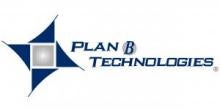Are your employees fully capable of accomplishing the same work that they could have done while in the office? Ideally, their in-office PC experience can be duplicated (securely) at home without any latency issues. If that’s not the case, your organization could be losing money with lost billable hours, or underutilization of existing solutions, etc. It’s paramount for the bottom line that your remote access capabilities are allowing your employees to achieve maximum efficiency to conduct business in a remote capacity.
There are three key areas of focus that need attention when planning a cost-effective and capable remote access strategy: speed, security, and scalability. “Putting effective security measures in place today along with mitigating remote access performance issues and ensuring the ability to adjust user access and scale will undoubtedly put you at a competitive advantage and positively affect your organization’s bottom line,” says Donnie W. Downs, President & CEO of Plan B Technologies, Inc.
First and foremost, the reliance on your employee’s end user device (or lack thereof) has a significant impact on what must be considered. There are two paths an organization can take to provide remote access to end users. The first is to allow end user devices to join the network as though they were plugged into a network jack in the office. The most common way to achieve this type of direct access is through a Virtual Private Network or VPN. The second approach is to present desktops and applications in a virtual session. This allows applications to be run on server horsepower in the organization’s datacenter and be used remotely from an end user device. Several products provide this capability, usually referred to as VDI or Terminal Services.
These options result in significantly different architectures. The primary difference is the level of dependency on the end user’s device. The VPN style solution relies heavily on the device’s capability and configuration. It’s required to provide all of the applications and computing power required by each end user. The VDI/Terminal services style solution requires much less from the end users devices. It is simply an interface to the remote session. The tradeoff is that a much more robust infrastructure is required in the organization’s data center or cloud.
Regardless of which way your organization is providing remote access today (VPN or virtual session), the speed, security and scalability (or lack thereof) will directly impact your cost.
SPEED
“To remain productive while working remotely, users need the same capabilities and performance they have when in the office,” says Downs. This translates to several things. They should be able to access all of the software and data they need. They should be able to access these resources using familiar workflows that don’t require separate remote access training. However, the most commonly missed requirement is that the remote access platform needs to provide adequate performance, so the remote access experience feels just like being in the office. Any latency will no doubt cause frustration and could ultimately affect your billable hours.
For direct access platforms this is a simple, yet potentially expensive formula. The remote access system needs to provide enough bandwidth so that the client device can access application servers, file servers, and other resources without slowing down. On the datacenter side, this means designing sufficient connectivity to the on-prem or cloud environments. Connectivity on the client-side, however, will always be more unpredictable. Slow residential connections, unreliable WIFI, and inconsistent cellular coverage are all challenges that will need to be addressed on this type of solution.
Performance within VDI/Terminal Services platforms is much more complex. Similar to direct access, we need to provide adequate bandwidth from the client to the remote access systems. However, this type of system typically has less demanding network requirements than a direct access system. Advanced VDI/Terminal Services platforms also offer a wide variety of protocol optimizations that can accommodate high latency or low bandwidth connections. That’s only half of the puzzle though. Because the user is accessing a virtual session running in the datacenter, that session needs to provide adequate performance. At a basic level, this means that the CPU and memory must be sized correctly to accommodate the number of users. But the platform also needs to match in-office capabilities such as multiple monitors, 3D acceleration, printing, and video capability. Full-featured VDI/Terminal Services platforms provide these capabilities, but they must be properly designed and deployed to realize their full potential.
SECURITY
“Remote access can expose your business to many risks – but it doesn’t have to be this way,” says Downs. “Whether your organization is supporting 10 remote users or 1,000, you need to provide the necessary access while guarding your organization against outside threats.” For successful and secure remote access, it’s necessary to manage the risks and eliminate your blind spots to prevent data loss, phishing, or ransomware attacks.
On the surface, securing remote access environments requires many of the same basic considerations as any other public-facing infrastructure. These include mandatory multifactor authentication, application-aware firewalls, and properly configured encryption to guard your organization against security risks and protect corporate data. Remote access security is unique due to the risk introduced by the devices used by your employees. These devices can include IT managed devices that are allowed to leave the office or employee-owned unmanaged devices. If your remote access end users are logging in with their own devices, over the internet, there is room for a security breach without conducting these three protocols:
1/ Conduct Endpoint Posture Assessments
For direct access remote connectivity, security is especially relevant since the end user device is being provided a conduit into the organization network. Ideally, devices connecting to a direct access solution should be IT managed devices. This ensures that IT has the capability to control the endpoint configuration and security. However, there are many environments where direct access is required by employee-owned devices. In either case, the remote access solution should have the capability to do endpoint posture assessment. This allows an end user device to be scanned for compliance with security policies. These policies should include up to date operating system updates, valid and updated endpoint protection/antivirus, and enabled device encryption. The results of the scan (or assessment) can then be used to ensure only properly secured devices are able to connect to the network.
2/ Protect Against Key Logging and Other Malware
VDI/Terminal Services remote access systems rely on the end user device only as an interface to the virtual session. As a result, these solutions provide the ability to insulate the organization’s network from the end user device more than a direct access connection. Administrators can and should limit the ability for end user devices to pass file, print, and clipboard data, effectively preventing a compromise of the end user device from affecting the infrastructure. However, there is a gap in this insulation that is almost always overlooked. Malware on the end user device with key logging, screen recording, or remote-control capability can still allow the VDI/Terminal Services session to be compromised. Advanced VDI/Terminal Services platforms have protection for these types of attacks built in. This should be a mandatory requirement when selecting and implementing a VDI/Terminal Services solution.
3/ Deploy Robust Endpoint Protection
Regardless of the overall remote access strategy, both IT managed and employee-owned end user devices should have robust endpoint protection. Traditional definition-based antivirus products no longer provide sufficient protection. These should be combined with, or replaced by, solutions that perform both behavior analytics and advanced persistent thread (APT) protection.
SCALABILITY
Capacity planning for remote access can be very challenging. It is often one of the most varied or “bursty” workloads in an organization. Under normal operations it is used for dedicated remote workers or employees traveling. But when circumstances require large numbers of employees to be remote, as they do today, demand for these capabilities will spike. Proper planning can allow remote access systems to deal with this and keep the entire organization productive, regardless of where they are working.
There are three key elements that affect the scalability of direct access and VDI/Terminal Services solutions: software licensing, network bandwidth, and hardware capacity. It’s important to remember that these three pieces are interconnected. Upgrading any one of them will likely also require an upgrade to the others.
1/ Software Licensing
Licensing for remote access solutions is generally straight forward. There are variables in choosing the correct license type such as feature set and concurrent vs named users. But, in terms of sizing, direct access, and VDI/Terminal Services solutions are usually licensed based on the number of users they can service. Proper scalability relies on having a license pool large enough to support the entire user base. Purchasing licensing for an entire user base can be prohibitively expensive, so some vendors offer more flexible licensing. Two common flexible license models are subscription and burst licenses. Subscription licensing can often be increased or decreased as needed. Burst licensing allows for the purchase of a break-glass pool of licensing that allows for an increased user count for a short period of time. Both of these models allow remote access systems to rapidly expand to accommodate emergency remote workers. This type of flexibility should be considered when selecting a remote access platform to help save your organization from unnecessary costs.
2/ Network Bandwidth
Bandwidth and hardware flexibility are much more difficult to plan for. Indirect access and VDI/Terminal Services scenarios, each additional user requires more WAN bandwidth and more hardware resources. WAN circuits for on-prem datacenters can require significant lead time to provision and resize. There are solutions such as SD-WAN or burstable circuits that can allow flexibility and agility in these circuits. But this must be carefully preplanned and not left as a to-do item when the expanded capacity is actually needed.
3/ Hardware Capacity
Hardware scaling has similar limitations. Adding remote access capacity can require hardware resources ranging from larger firewalls to additional servers depending on the specific remote access platform. Expanding physical firewall and server platforms requires the procurement of additional hardware. During widespread emergencies, unpredictable availability of hardware can lead to significant delays in getting this done. Fortunately, most remote access platforms allow the integration of on-prem and public cloud-based deployments. A common strategy is to deploy systems into the public cloud as an extension of the normal production environment. These systems can then be spun up when needed to provide the additional capacity. This is a complex architecture that requires diligent design and planning, but it can provide a vast amount of scalability at reasonable cost.
Positioning your organization with a remote access strategy that can scale will save you time and money in the future. It’s unknown how long the effects of the coronavirus pandemic will impact the landscape of remote work for organizations. Planning and preparing to continue to conduct business with a secure and robust remote access strategy in place will put you ahead of your competition.







 />i
/>i
